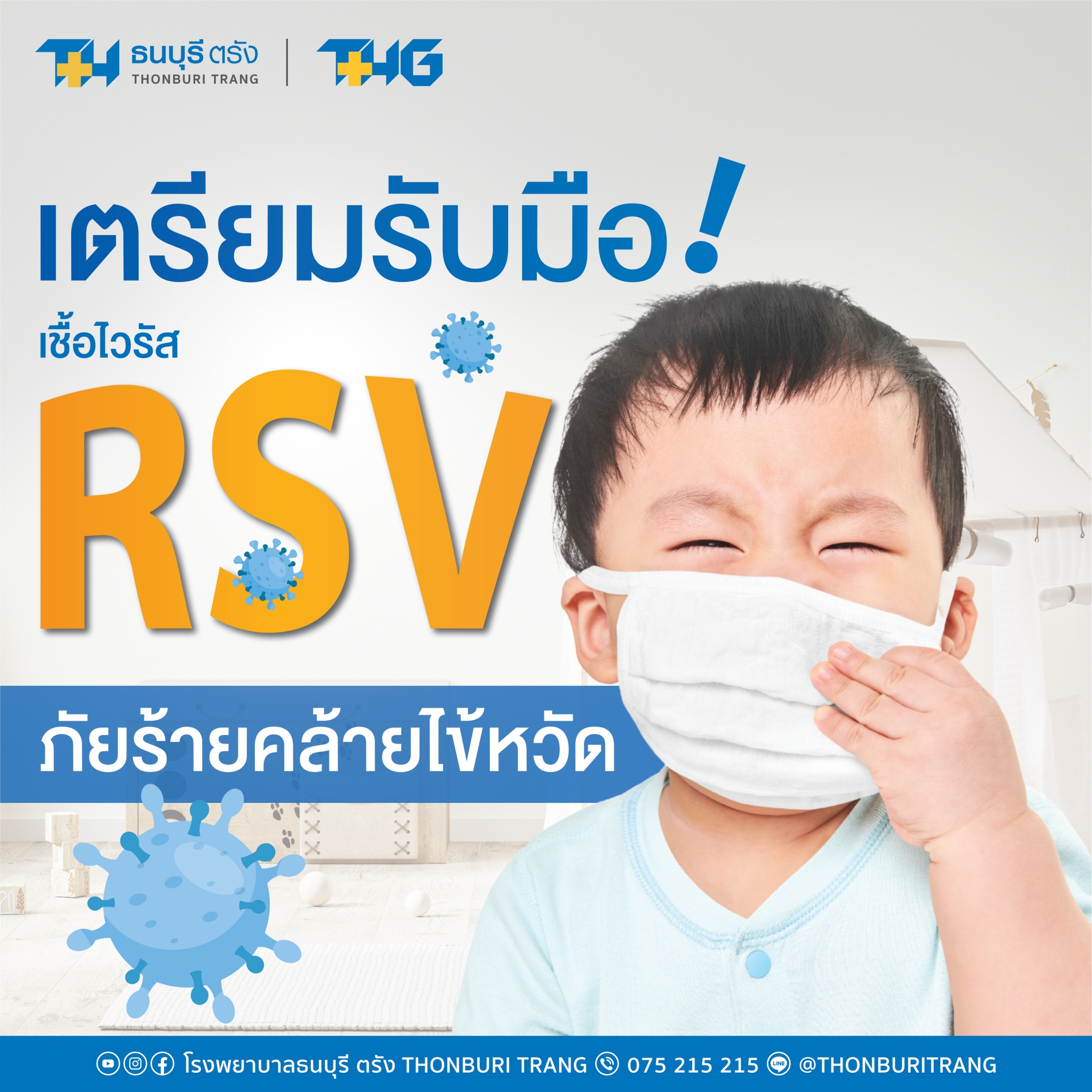 Thonburi Trang
Thonburi Trang

Guide for parents — Thonburi Trang Hospital
Meta title (≤60): RSV in Children: Symptoms, Risks & Prevention | Thonburi Trang
Meta description (≤160): Understand RSV in infants and young kids: common symptoms, red-flag signs, home care, prevention, and when to see a pediatrician at Thonburi Trang Hospital. Call 075-215-215.
Focus keyphrase: rsv children trang
Suggested slug: /blog/rsv-children-trang
One sneeze and the whole house panics—sounds familiar? In the cooler/rainy season, RSV (Respiratory Syncytial Virus) spreads easily in daycare and schools. It can start like a common cold but may progress to bronchiolitis or pneumonia, especially in babies and high-risk children.
A respiratory virus spread by droplets and contaminated surfaces. Older kids often recover at home, but severity increases in:
Infants (<12 months)
Premature babies
Children with chronic heart/lung disease
Children with weak immune systems
Fever, runny nose, cough with thick phlegm
Fast breathing, wheezing (a high-pitched whistling sound)
Poor feeding, irritability, fatigue
In young infants: pauses in breathing or bluish lips/fingertips
Rapid breathing, chest retractions, flaring nostrils
Persistent high fever (>39°C) for 2–3 days or febrile seizure
Lethargy, refusal to drink, no urine >8 hours (dehydration)
Bluish lips/skin or breathing stops in spells
Rule of thumb: If your gut says “this isn’t right,” see a doctor.
Do
Control fever and keep the child comfortable (paracetamol/acetaminophen by weight, as advised by a clinician)
Offer fluids or breast milk frequently; small amounts, more often
Nasal saline rinse/suction to ease breathing and feeding
Keep air well-ventilated; avoid all smoke exposure
Avoid
Antibiotics unless prescribed (RSV is viral)
Multi-ingredient cough/flu syrups in young children without medical advice
Sharing cups/towels; RSV spreads fast within households
Frequent handwashing; wipe toys, doorknobs, and high-touch surfaces
Teach cough/sneeze etiquette and immediate tissue disposal
Avoid crowded spaces for babies during peak season
Breastfeeding supports immunity
Caregivers who are unwell should wear a mask and skip the cheek kisses (love can wait a few days)
RSV: heavy cough, sticky phlegm, wheeze; breathing difficulty more common in infants
Influenza: sudden high fever, body aches
COVID-19: broad range of symptoms; loss of smell/taste in some cases
Testing and clinical assessment help confirm the cause.
Depending on eligibility and national availability, options may include maternal vaccination (during pregnancy) and long-acting monoclonal antibodies for high-risk infants to reduce severe RSV disease. Discuss current options and timing in Thailand with your doctor.
Any red-flag signs above
Fever >48–72 hours, poor intake, or worsening cough/wheeze
Any fever/respiratory symptoms in infants under 3 months
Whenever parents are uncertain and want a professional check
What we provide: pediatric assessment, oxygen level monitoring, nebulization if needed, hydration support, targeted tests/imaging when indicated, and clear home-care instructions.
How long is a child contagious?
Typically from symptom onset for 3–8 days; infants can shed longer. Separate personal items and clean surfaces.
Does every child with RSV need hospitalization?
No. It depends on age, oxygen level, feeding and breathing status. Doctors admit children who meet risk or severity criteria.
Do antibiotics help?
No—unless there’s a bacterial complication, which a doctor will diagnose.
When are inhaled bronchodilators used?
Only in selected children with wheeze/airway spasm if clinically beneficial.
Night cough won’t stop—any tips?
Nasal saline before sleep, slight head elevation, adequate fluids, and a comfortably humid environment. If breathing is fast, with chest retractions or the child is unusually sleepy—come in immediately.
Thonburi Trang Hospital (THG)
Phone: 075-215-215 • Line/FB: @THONBURITRANG
Open 24/7 • Pediatric Clinic daily
Location: Mueang Trang (add Google Maps embed on page)
Primary CTAs: “Book Pediatric Appointment” and “Chat with Nurse” — place at top and bottom of the article.